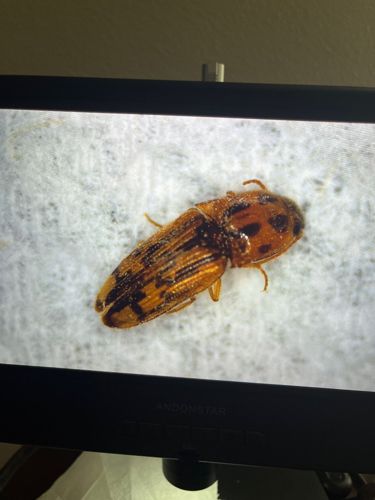Click Beetle (possibly Alaus oculatus or a related species)
Scientific Name: Family Elateridae (likely in the genus Alaus or related genera, specific species identification is difficult from the image alone)
Order & Family: Order Coleoptera, Family Elateridae
Size: Typically "0.25 - 1.5" inches (6 - 38 mm) for adults, depending on the species.

Natural Habitat
Adult click beetles are commonly found in wooded areas, gardens, and fields. They can be found on vegetation, under bark, or attracted to lights at night. Larvae (wireworms) live in soil or decaying wood.
Diet & Feeding
Adult click beetles generally feed on nectar, pollen, decaying plant matter, or are not known to feed at all. Larvae, known as wireworms, are often destructive pests, feeding on seeds, roots, and tubers of various plants, including agricultural crops. Some wireworm species are predatory on other soil invertebrates.
Behavior Patterns
Click beetles are known for their unique 'clicking' mechanism, which they use to right themselves when overturned. They can also use this mechanism to escape predators. They are generally nocturnal and are attracted to light. Their life cycle can be quite long, with larvae sometimes spending several years in the soil before pupating.
Risks & Benefits
The primary risk associated with click beetles comes from their larval stage, wireworms, which can cause significant damage to agricultural crops and garden plants by feeding on roots and underground stems. They are not known to bite or sting humans. In terms of benefits, some adults contribute to pollination, and predatory wireworm species can help control other soil pests.
Identified on: 9/5/2025